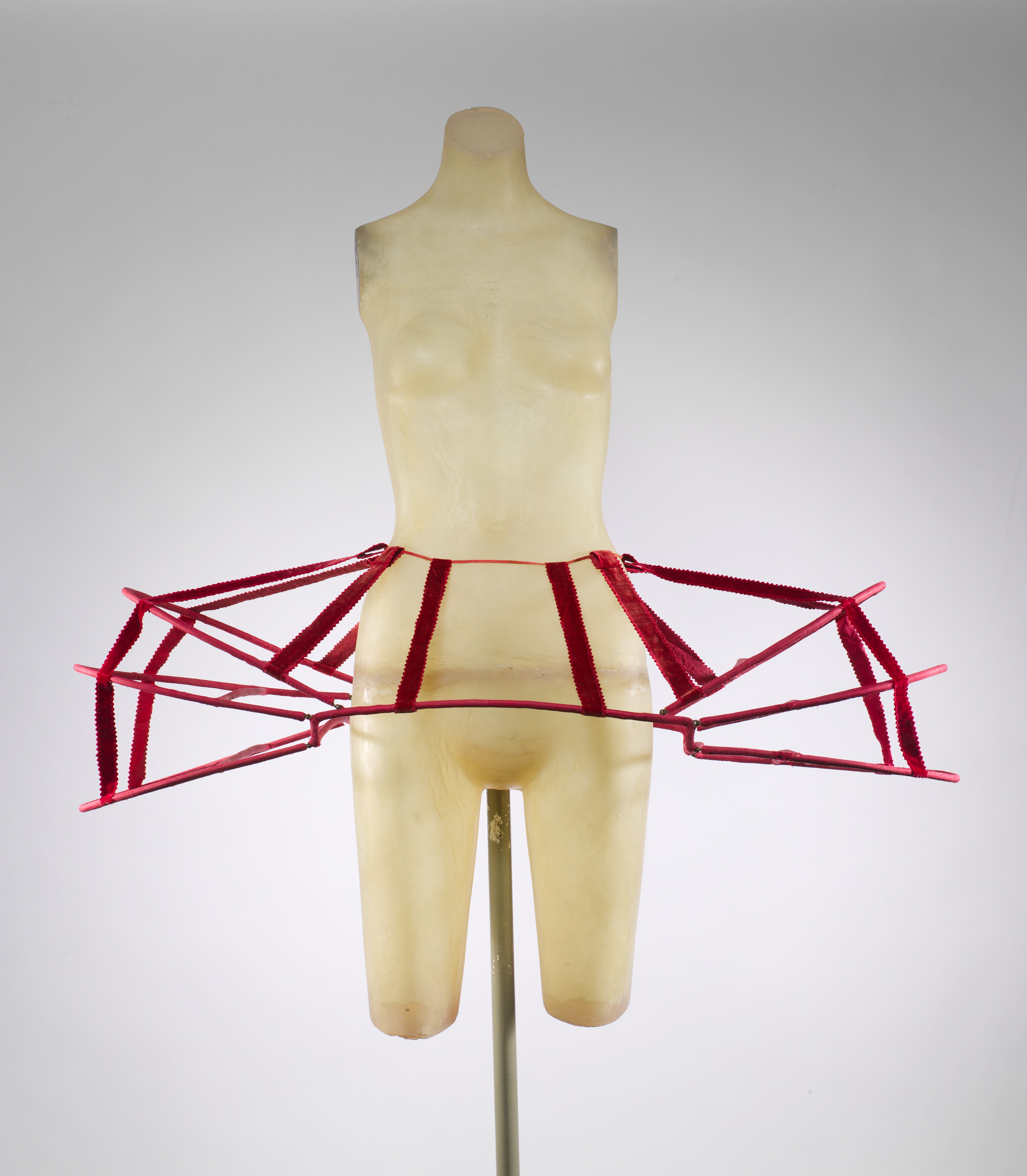Panniers
Not on view
Panniers, hooped petticoats fashionable in Europe for much of the eighteenth century, provided support for the era’s voluminous gowns. They also tested a woman’s “natural” grace. The ability to carry oneself elegantly and with the impression of ease despite such cumbersome undergarments was a learned skill and a marker of high social status. This pannier, a rare surviving example, has been fitted with hinges that allow the hoops to be lifted, facilitating movement in tight spaces. From their introduction, panniers were a subject of ridicule. They were attacked, mainly by men, on a number of grounds: as unnatural in their distortion of the figure; as socially destabilizing when adopted by bourgeois women; and as an invitation for women to behave promiscuously, since their volume could obscure pregnancy. The charges had little effect on the pannier’s popularity.
This image cannot be enlarged, viewed at full screen, or downloaded.
This artwork is meant to be viewed from right to left. Scroll left to view more.



